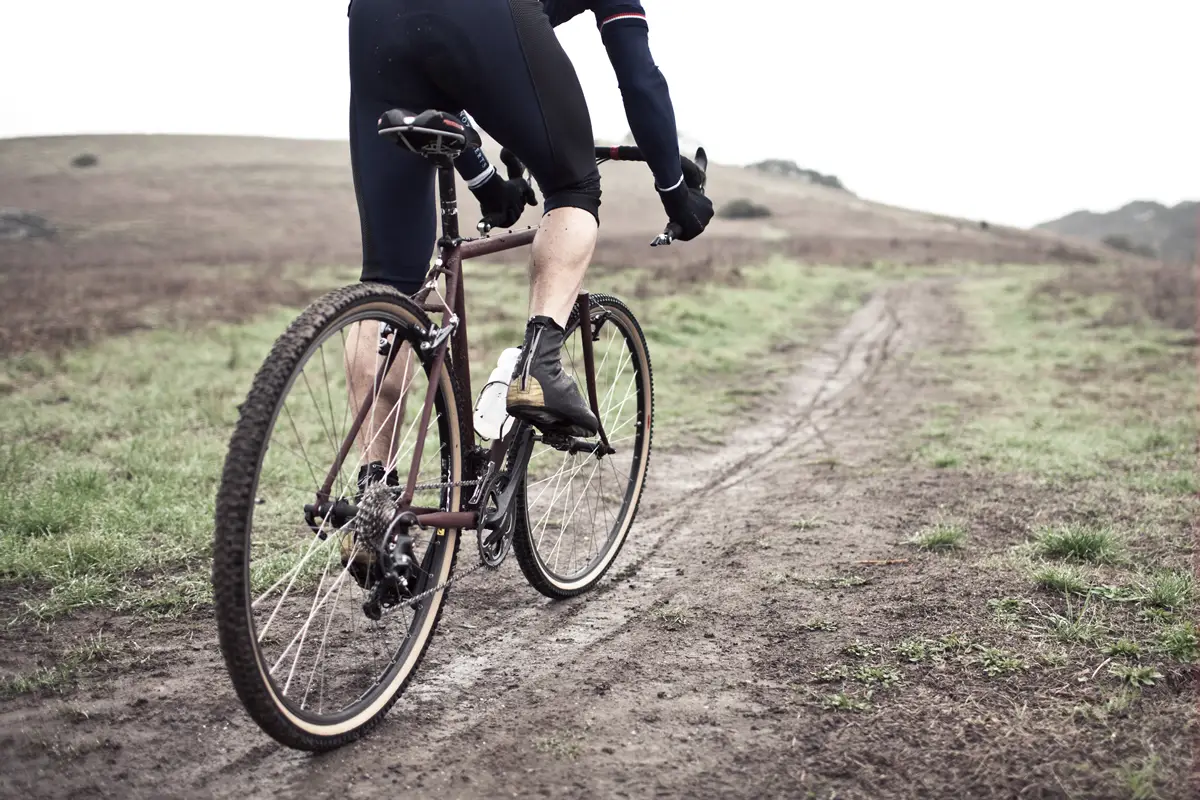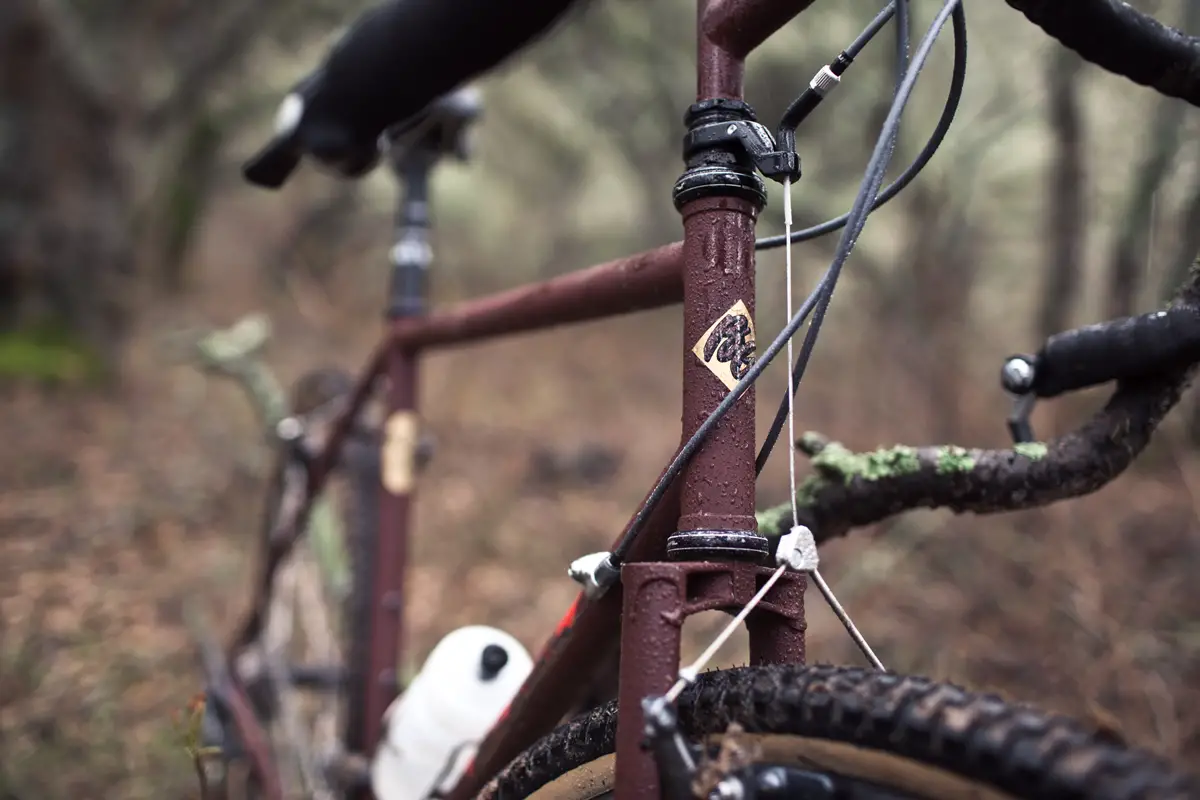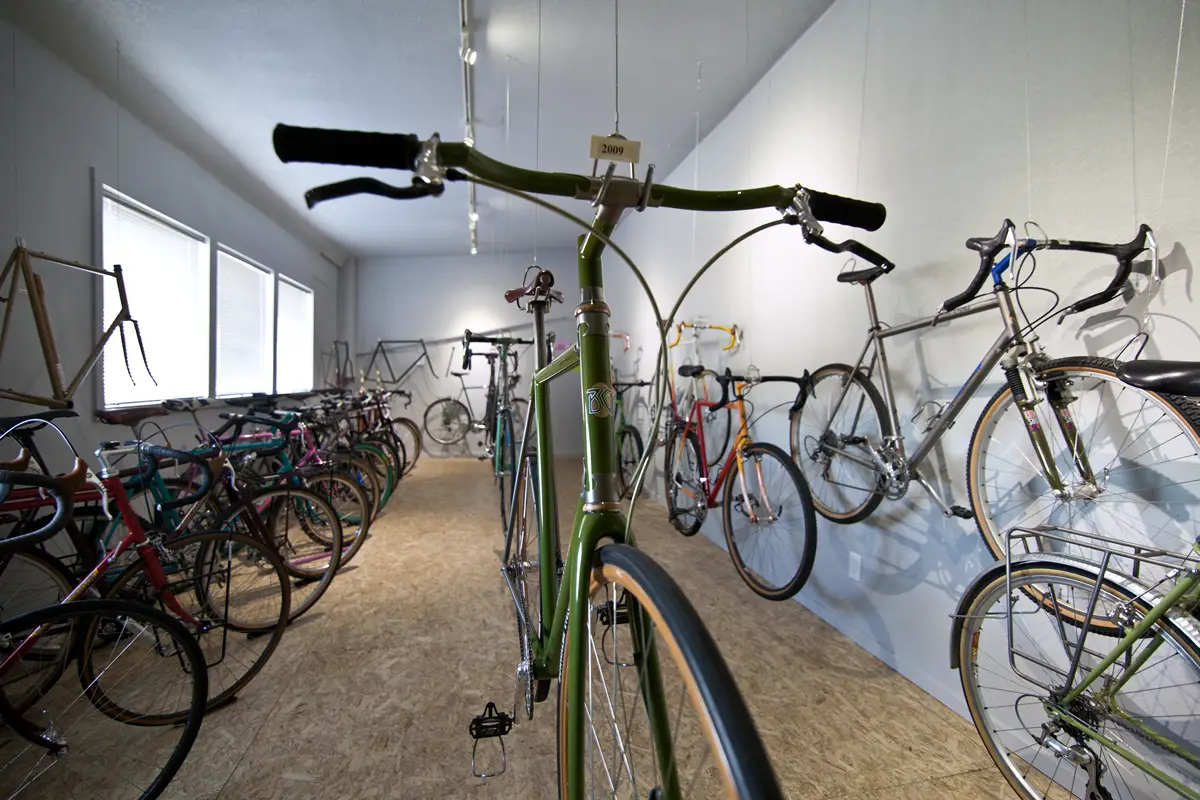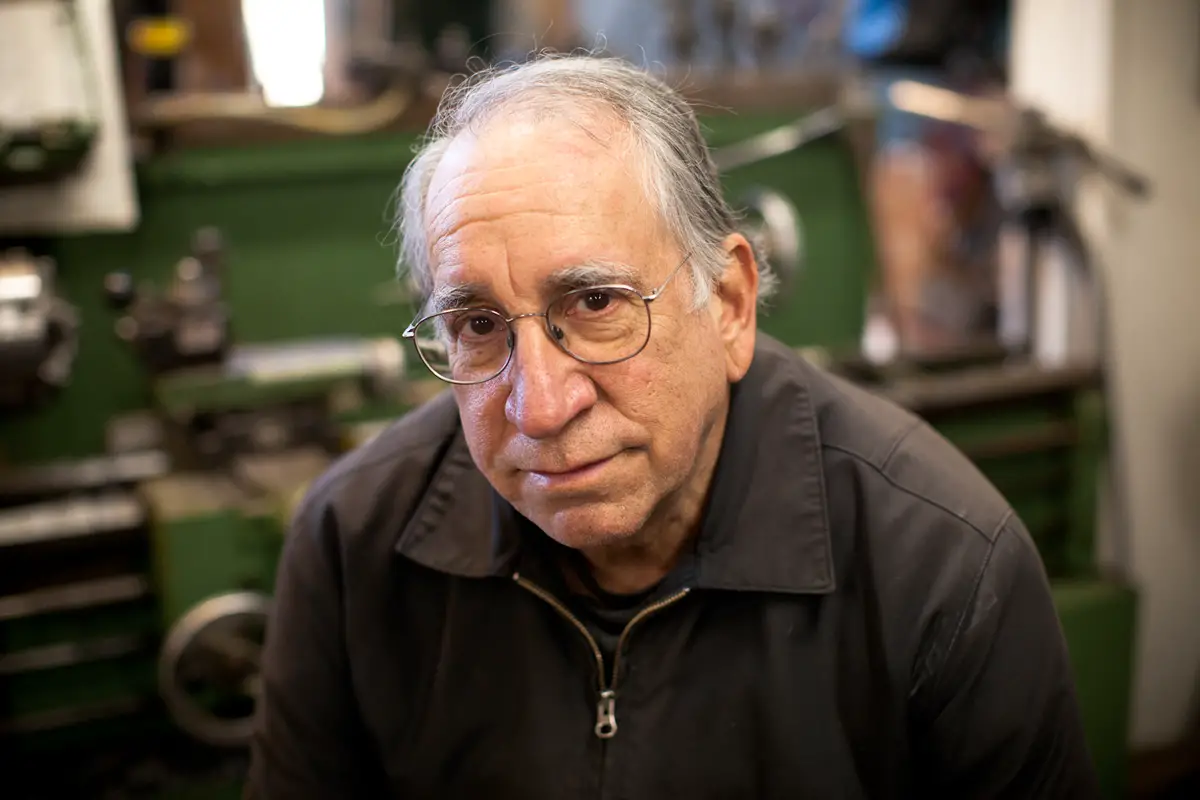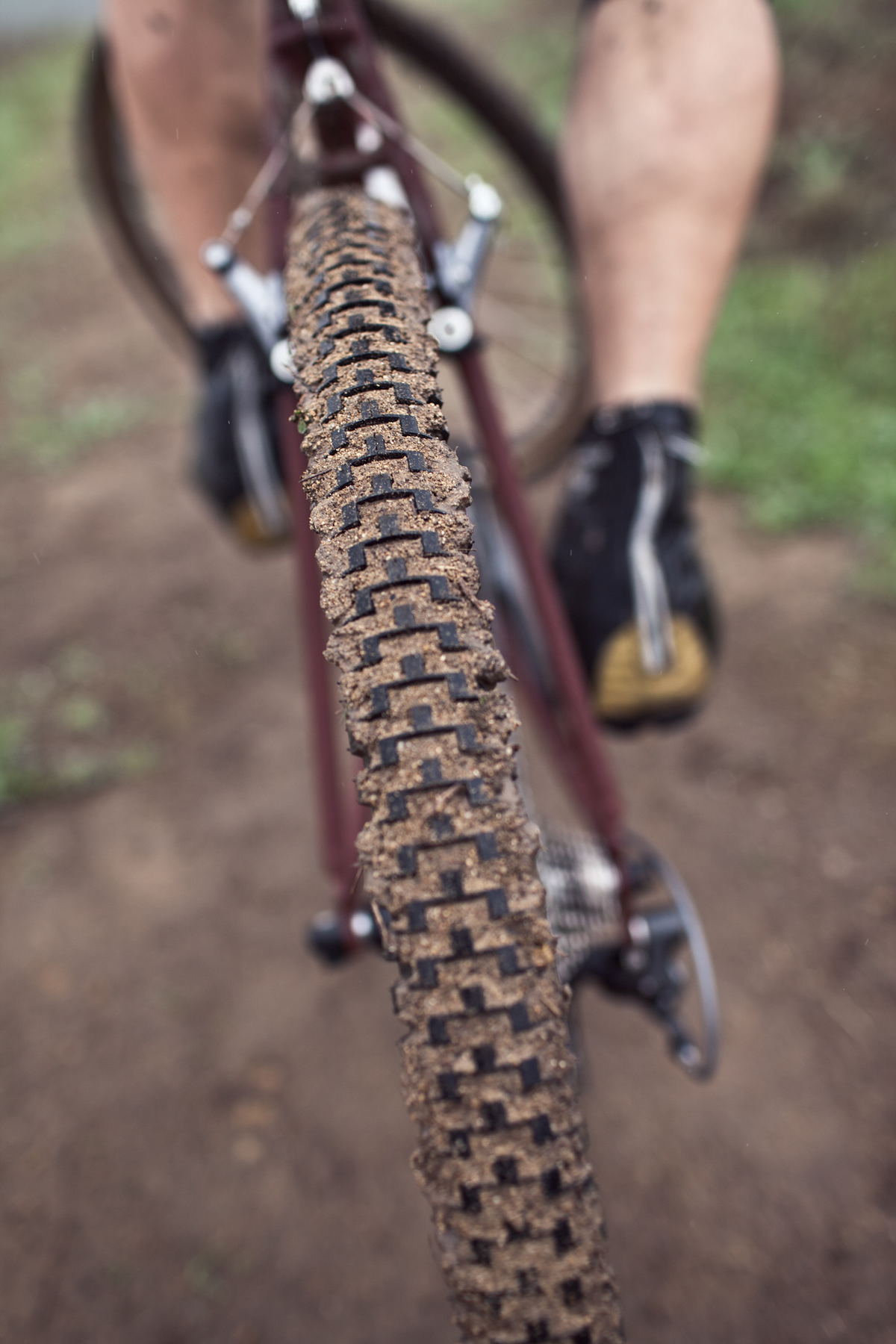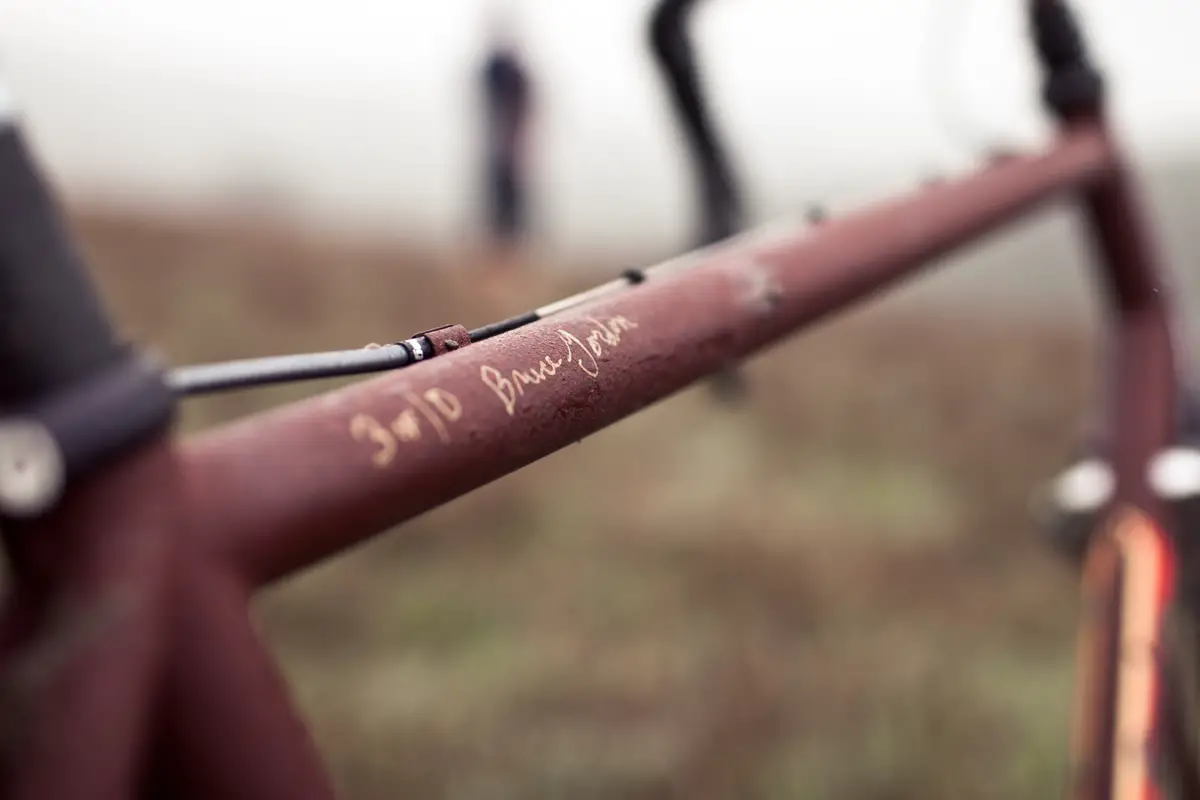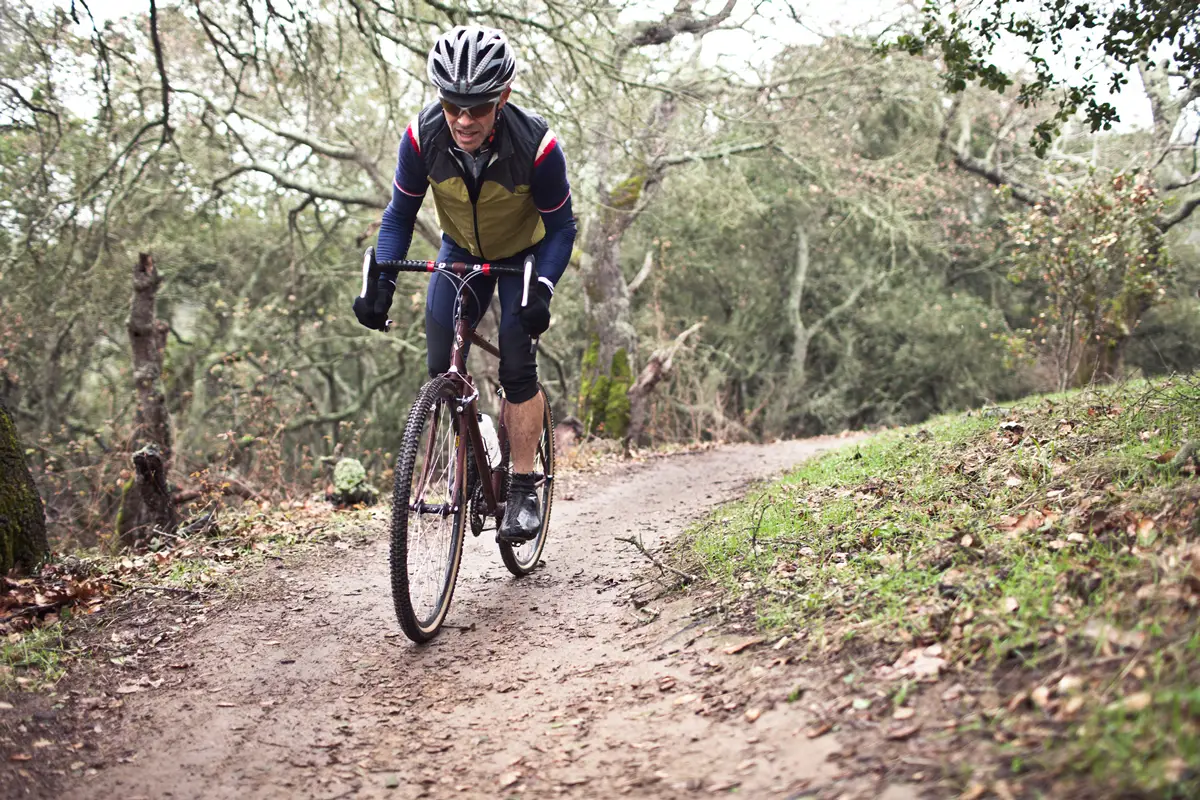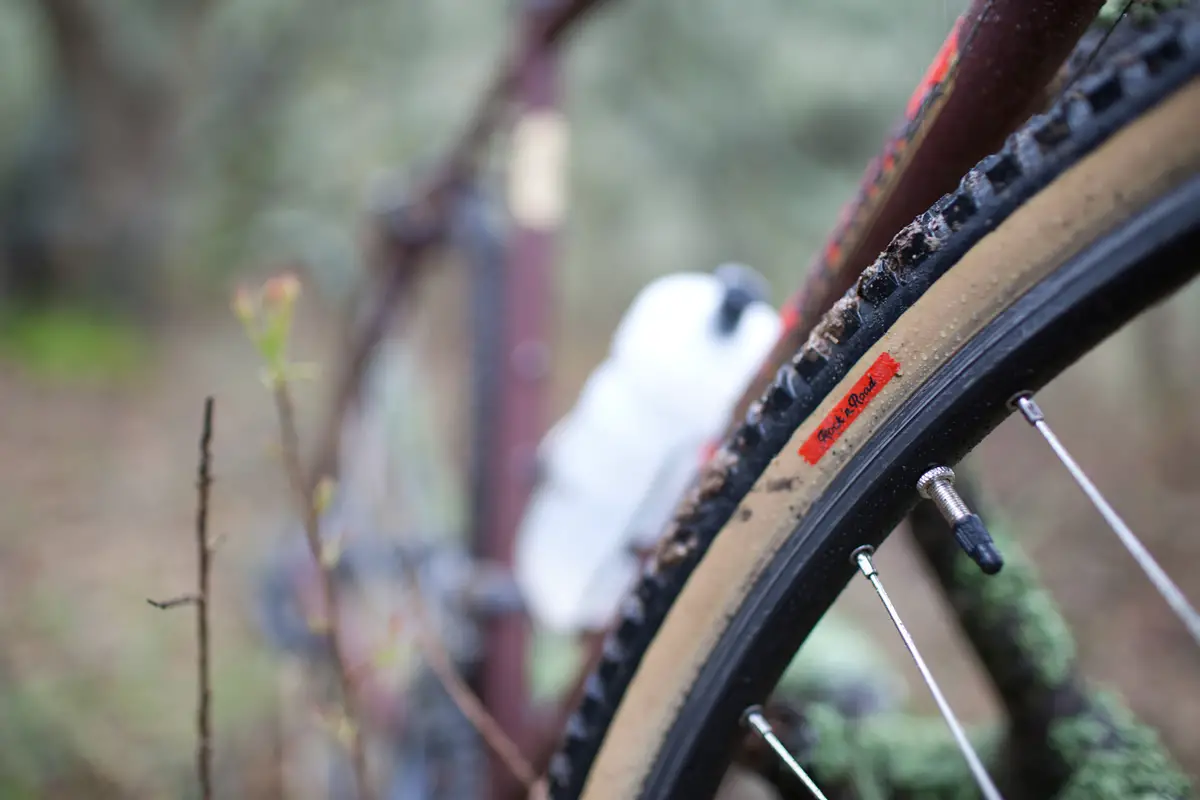Bruce Gordon’s Rock n’ Road
Words by Karen Brooks. Photos by Michael Woolsey.
Everything new has been done before. The current bike trend of gravel grinder, monster cross, adventure touring, or what-have-you reflects a style that has been around for at least 30 years, possibly longer if we consider randonneurs, trekking bikes, or more exotic one-offs.
A key pioneer of this style also happens to be one of the most respected bike builders to ever wield a torch: Bruce Gordon. His Rock n’ Road bikes are museum-worthy, not just because of their groundbreaking nature, but for their beauty. Lugs curl over tubes like beautiful waves, each requiring many hours of hand filing. Details such as the precise pointed bend on a carbon handlebar or the elegantly simple curve of a toe clip elevate his bikes to art. But it’s rideable art; Gordon is an understated master of geometry, with a deep knowledge of how to make a bike comfortable and functional.
Gordon began applying his talents to explore the rich territory of “fat-tyre road bikes” back in 1988, when mountain bikes were still in their adolescence. This now-popular branch of the bicycle tree nearly withered for lack of attention soon after sprouting. But his efforts could be compared to a record that sold a paltry few thousand copies upon release that nevertheless inspired everyone who purchased it to start a band.
It Started with a Tyre
Early in Gordon’s framebuilding career he lived in Oregon and built mostly road racing bikes. His attention was drawn to the possibilities of dirt when he moved, in 1988, to the fertile ground of Northern California, where the mountain bike was gaining traction (no pun intended). He set up shop in the back of Salsa’s headquarters, and hung out with the likes of Ross Shafer, founder of Salsa, and Gary Helfrich, the titanium guru of Fat Chance and Merlin Metalworks. That year, Helfrich found an artifact that sparked innovation—a heavy Finnish tyre, the Nokian Hakkapeliitta, in 700x45mm size. It was certainly not a road-racing tyre, but too large in diameter and too narrow to be considered a mountain bike tyre. Still, it spoke of dirt road adventures. Gordon, Shafer, Helfrich and others began building bikes around this tyre and enjoyed them enough to look into reproducing it.
Another legendary figure in the scene, racer and designer Joe Murray, was recruited to do a technical drawing of the tyre’s design, the old-fashioned way—in pencil. Murray recalled: “When I asked what kind of tread design, he said make them like the Hakkapeliitta. I changed a few things, maybe we decided on making them a bit larger… side knobs a bit taller, etc.” For his efforts Murray received a pair of Gordon’s chromoly racks, which later accompanied him on bike tours all over the world.
Gordon dubbed the tyres Rock n’ Road, and had a run made in a Taiwanese factory. “Probably a thousand of ’em,” he said, “and we couldn’t give ’em away.”
Part of the problem was the existing dichotomy between road and mountain bikes, which was helped along by the U.S. government. “The import duty was the big thing,” said Gordon, “the duty on anything [with a tyre] over 40mm was 11%, and anything under 40mm was half that, 5.5%.” This was a relic of the days when U.S.-made balloon-tyre bikes abounded, and skinny-tyre road racing machines were mostly a European creation; the duty was meant to protect U.S. bike factories from encroaching Asian trade. There were no widely available frames to fit the tyres; Gordon and his colleagues were too far ahead of their time for the market.
Still, the tyres, and the bikes hand-made to fit them, were a lot of fun. Clearly they were onto something. “The Rock n’ Road started out as what I call the fat-tyre road bike,” he said. The tyre was “not a full mountain bike tread, but an off-road aggressive tread, for rougher touring, light off-road, etc. We would ride them on trails and everything.”
Big Wheels Go ’Round
Gordon’s tyre was also a stepping stone to the now-ubiquitous 29er mountain bike. Another of his fellow bike tinkerers was Wes Williams, who worked with Ibis and later started his own brand, Willits. Williams and Gordon collaborated on two titanium bikes built around the Rock n’ Road tyres, one for each of them (Bruce still owns his). As part of the project, Gordon tried to convince Paul Turner, head of fledgling suspension maker RockShox, to produce a 700c fork. During that phone call, Gordon said Turner (or another employee) advised him that “no one in their right mind would want it”. So Gordon machined a custom fork crown and brake arch to fit a RockShox fork. Williams later expanded the tyre idea, literally, and convinced Wilderness Trail Bikes (WTB) to go bigger and produce true mountain bike tyres in the 700c size, or what is now known as 29″.
Gordon explained his big wheel reasoning of the time. “Stagecoaches had six foot diameter wheels—not because they were easier to make, but because they rolled over things better. A 700c wheel has less angle of attack…[with] 26″, you’re riding up a much steeper angle. Now everybody uses that same logic… it didn’t work for me in ’88,” he lamented.
The reader has by now detected an air of humorous self-deprecation in Gordon’s recollections. This attitude is part of his legendary grumpiness, or his charm, depending on how one looks at it. “I remember when I first moved here, when I built those first Rock n’ Road bikes that had those tyres, we ended up taking them over to a fancy bike shop in the East Bay,” he recalled. “They had probably half a million dollars, they had Merlins, and Colnagos, Eisentrauts and everything on the wall. Everybody really liked the bike—I brought it with two sets of handlebars and stems so you could switch them really quickly, and it had two sets of wheels, one was a road wheel and one was the Rock n’ Road tyre. The shop never bought any. I remember walking out of there thinking, ‘If Ross Shafer or Keith Bontrager or somebody had come in there with the same bike, the guys would have had to go in the back and change their pants’.”
Despite this setback, Gordon still went on to produce quite a few of the Rock n’ Road bikes, by his count somewhere in the neighborhood of 1,200 –1,700, with peak years being 1990 to 1997. The model also presaged the bikepacking trend. “A lot of people wanted to use them for touring,” he said, “so I made [a version] with slightly heavier tubing, slightly longer chainstays to keep heel clearance, and three water bottle mounts. The Rock n’ Road was first, then the Rock n’ Road Tour sort of morphed from that. I still make both.”
Spreading Ripples
Sean Walling, who later went on to build bikes under the name Soulcraft, worked for Gordon in those formative years, 1988–89, and got an early taste of how fun an in-betweener bike could be. “I used a Gary Helfrich Ti flat bar on mine and swapped to drop bars once in a while for road riding. I loved the bike and saw it as a challenge to make the smaller tyres work on mountain trails, which I did. Getting out to trails on the road and splitting rides between mountain and road was really cool and gave me the sense I could go wherever I wanted.”
The Soulcraft Dirtbomb was a descendent of the Rock n’ Road, though Walling credits Shafer’s Salsa La Cruz ’cross bike as an intermediate inspiration. “I think because of where we live, in Northern California, you just assumed people would want to take their bikes off road at some point, so why not design the bike to do that? When we started Soulcraft, our Groundskeeper ’cross bike was an exact copy of the La Cruz.” But as with the La Cruz, the concept was difficult for some to grasp. “People told us they would rather run road cranks than have fat tyres.” (A road triple crank won’t fit on a frame with clearance for tyres wider than about 35mm.) “So we redesigned it to be a ‘pure’ ’cross bike with 35mm max tyres and able to run a 39/53-tooth road crank.”
Like Gordon, Walling found the market was not yet ready, though he wouldn’t let the idea die. It got some help from a popular cycling personality. “We still offered a ‘fat’ version of the Groundskeeper, which not a single person was interested in. So in 2007 I built a fat version for Steve Smith [a.k.a. Stëvel Kniëvel of All Hail the Black Market] and thought it should have its own name so people could really see this bike on its own terms, not as some kind of butchered ’cross bike. In passing Steve mentioned one of his favorite bands, The Dirtbombs, and I knew that was it. It perfectly describes it. We showed the first ‘official’ Dirtbomb at the Portland North American Handmade Bicycle Show in 2008 and people were digging it. I started to think that maybe people would start to get it, 20 years after Bruce had built his bikes.”
Rock n’ Road Rebirth
However, an old problem again reared its head—a dearth of suitable tyres. Ritchey had made a Z.E.D. version in 42mm, but discontinued it; Panaracer made their popular Fire tread in a ’cross size, but it was a bit heavy for road use. A 2010 UCI ruling that tyres for cyclocross racing could be no wider than 33mm was a blow to the market. But meanwhile, Gordon was tinkering with a 29er-ish city bike. “I put big Schwalbe tyres on it, and it just rode like hell,” he says. So Gordon dug out his one remaining pair of Rock n’ Road tyres from 25 years earlier. This time they were an instant hit with all who saw them. Gordon wisely decided to have more made.
The new batch of Rock n’ Road tyres came in the nick of time for Soulcraft. “It’s funny, because after a few years of building Dirtbombs there still wasn’t a really good tyre for it and I was worried that it wasn’t going to really catch on. When Bruce started making his tyres again it gave this style of bike a big boost. Small builders have always been making bikes like this, but I saw a lot more doing it after Bruce relaunched his tyres. Then WTB came out with the Nano 40s and all the sudden it became a bit of a movement.”
Tyres have become a large part of Gordon’s business, which is fine with him. “I’m very happy to just sell tyres. There’s so many bikes out there, and everybody makes bikes… There are a whole bunch of people making tyres, but ours are still the ones that people want. Tyres are something that I’m sorry I didn’t start on 15 years ago.”
The Rock n’ Road concept continues to inspire. Paul Sadoff of Rock Lobster fame shows off many bikes built with Rock n’ Road tyres on his blog. Sadoff was another early experimenter with fatter tyres for drop-bar bikes, but for cyclocross racing; he built what he called “big-tyre CX frames” around the scarce Hakkapeliitta tyres starting in 1992, to give his racers an advantage on the scary ‘jungle cross’ courses of the time.
For the 2016 NAHBS show, Sadoff and Gordon conspired to create a line of five diverse bikes all using Rock n’ Road tyres, cheekily dubbed ‘Schnozola’, spelled out in a Hebrew-esque font. “The thing with Schnozola,” Gordon explains, “it’s a collaboration between Paul and me. Paul welds, I cut tubes, we consult on the geometry… I really don’t know why we do it. It was fun, and Paul wanted to do it.” With typical wry humor, he says, “We couldn’t give ’em away at the NAHBS thing… everybody wanted ‘show bikes’. We made bikes basically to make fun of ’em, and we made bikes that people actually rode. But three out of five have sold. On the Internet, which is filled with assholes, [people ask] ‘What’s with this Schnozola?’. We think it’s funny.”
On the subject of the current trend of fat-tyre road bikes, Gordon is much more positive. “With gravel grinders, monster ’cross, whatever somebody wants to call ’em, I’m actually pretty excited about it. The adventure touring thing is an exciting thing.” But then he reverts to his endearing curmudgeonly ways. “The difficult part is selling it. Making it is not hard. Bottom line, the design of bikes hasn’t changed in 40 years—just new materials and new tyres. With enough marketing you can sell horseshit to a horse.”
